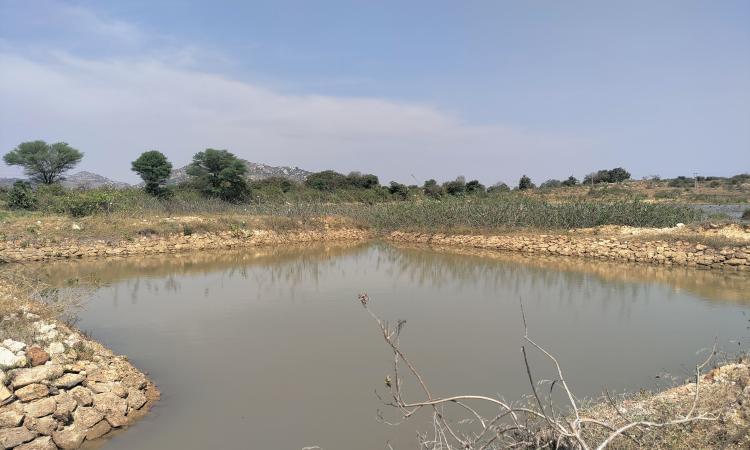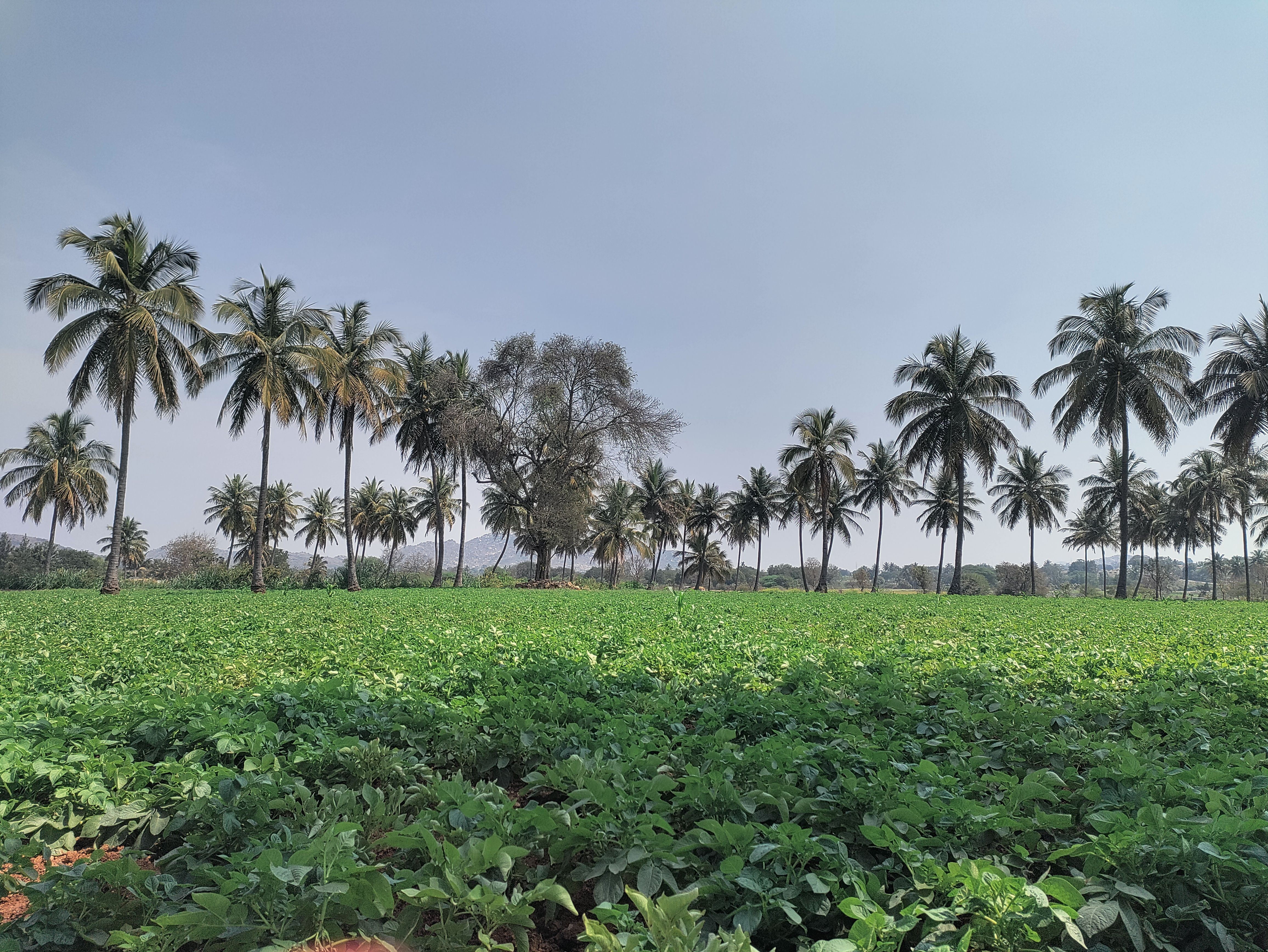
The Maralappanahalli community has come a long way since the formation of its Grama Parisara Abhivruddi Samiti in 2017. The livelihood basket of the 40 households here largely comprised agriculture and livestock rearing for the longest time, but the Samiti has been instrumental in helping its people learn about MGNREGS and avail it to support their livelihoods. The community’s journey to this point, however, was quite a challenging one.
About 100 acres of gomala (grazing land) here are shared among three villages – Maralappanahalli, Dasarahalli and and Budugavarahalli in Chikkaballapura district, Karnataka. There are two tanks on these shared lands – and one (Mallikunte) belongs exclusively to the Maralappanahalli community. Even before the formation of the Samiti in Maralappanahalli, all three villages were collectively restoring their shared or common lands.
However, several patches of the Mallikunte tank bed area and its feeder channel were encroached upon many years ago. The Mallikunte tank irrigated 60 acres of farmland in Maralappanahalli, and supported domestic and livestock needs of the community. The encroachment proved to be a drastic setback – many people migrated to nearby cities and towns for daily wage labour.
The Samiti was very disheartened by the state of affairs. They initiated dialogues with the encroachers but to no avail. After many an attempt, they filed an application with the Tehsildar, requesting their help in removing the encroachment. Several discussions and field visits followed, after which it was decided to record the boundaries of the common lands. Mamatha, the Panchayat Resource Person[1] (PRP), was supportive in the entire process, guiding the Samiti members with all the paperwork and helping them use the Common Land Mapping (CLM) tool to map the boundaries of their common lands.

A little over two years ago, the encroachments were finally removed. Meanwhile, Mamatha informed the Samiti about the Gram Panchayat Asset Register[2] (GPAR) and the provision of entering their common lands into it, to prevent further encroachments and misuse.
“Realising the significance of securing commons, I approached the Samiti members to take action. We filed all the necessary documents and now, the entire 100 acres of commons belonging to all three villages are entered in the Talakayalabetta GPAR,” says Mamatha, Panchayat Resource Person.
Since then, the Maralappanahalli community has implemented several Soil and Moisture Conservation (SMC) activities to restore and regenerate their common lands. The Samiti worked tirelessly to inform the community about using MGNREGS for Natural Resource Management (NRM) and for additional incomes.
So far, the community has implemented the revetment of the feeder channel and drainage, created a cattle pond, and periodically planted native species, all of which have improved water recharge and surface water availability. Around 25 households undertake MGNREGS work, for 70 days on an average. Tank desilting is periodically undertaken and 40 households across the 3 villages have benefited from applying the tank silt on their farmlands.

The silver lining through all the challenges they faced was the fact that they grow stronger as a collective. This began to reflect in other walks of their lives as well. For instance, they realised the need to complement their efforts on the commons with similar efforts on private lands. From shifting to sustainable agriculture practices such as drip irrigation and use of organic manure, to mobilising MGNREGS funds to construct farm bunds and farm ponds, the Maralappanahalli community has done it all!
With Mamatha and the Samiti members’ support, the Maralappanahalli community have tapped into Gram Panchayat Development Planning (GPDP) provisions to construct the school’s compound, and to include NRM works in MGNREGS plans. The four SHGs in the village are nested within the Samiti, and women actively participate in all village meetings and activities.
In particular, Mamatha and the womenfolk in the Gram Panchayat have been able to successfully tap into NRLM provisions to create a solid waste management plant that addresses the issue of mounting waste and also generates revenue for the Gram Panchayat by segregating and reselling recyclable materials.
Moving forward, the Samiti wishes to bring public transport facilities to the village and help the community access markets and avenues more easily. The community’s journey is nothing short of inspirational, and their future plans promise to bring even more positive changes to the village and its people.
Endnotes
[1] Panchayat Resource Persons are community members who support their Panchayats in planning, monitoring and managing development interventions. FES engages with them to build their skills, knowledge, and leadership abilities.
[2] The Gram Panchayat Asset Register is a comprehensive record of all the assets owned by the Panchayat, including land and water resources, buildings, infrastructure, equipment, and other properties owned or managed by the Panchayat. The register serves as a critical tool for effective planning, decision-making and resource allocation at the local level.
/articles/journeying-setbacks-successes-one-step-time